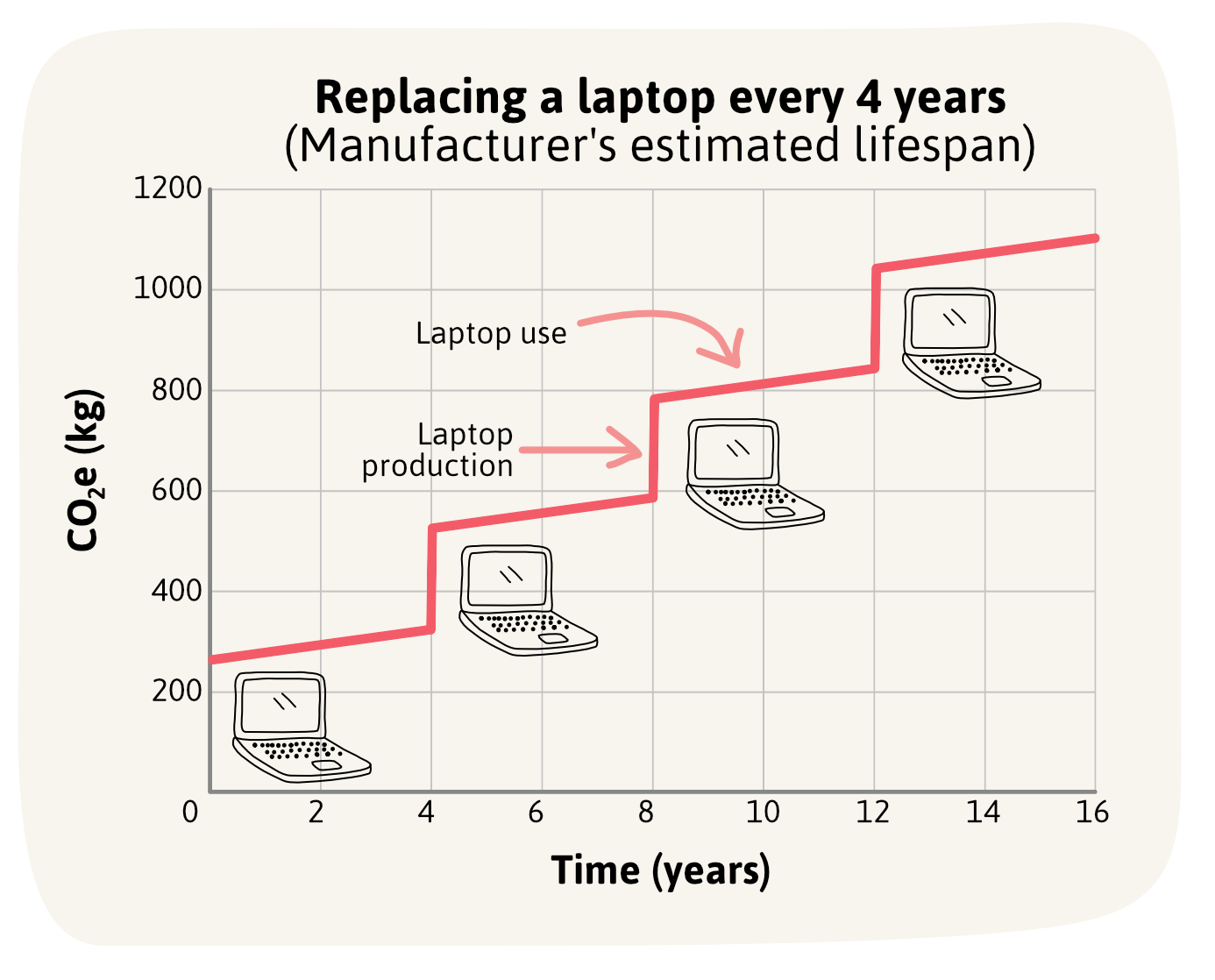The Restart Project sourced and analysed environmental impact data on nearly 500 household products (primarily electrical and electronic devices) to reveal the environmental cost that many companies hide. Their results are shared here: https://therestartproject.org/consumption/hidden-impact-devices/
Their main findings were:
1 – Most companies do not offer publicly-available data about the embodied carbon of the products they sell.
- Only a small number of tech companies share data for some types of IT products, such as laptops, desktops and monitors. (Most of these companies seemingly publish this data get environmental accreditation, such as EPEAT ecolabels.)
- For most household electrical/electronic devices, there is very little publicly available data about environmental impacts, especially during the manufacturing phase. Much of the data we did find came from academic journals.
2 – For most types of item they see at community repair events, most of the global warming impact occurred before it was used for the first time.
- For many common products, such as laptops, smartphones, blenders and clothes, over 70% of the total CO2e impact occurs before they are even used.
- Many high-impact electronic devices are designed with a short lifespan. Most laptop manufacturers we looked at rated their devices for just 4 years
3 – Extending the life of our devices is an effective way to reduce our overall impact over time
- As consumers, we can reduce the hidden environmental cost of our devices by using them for as long as possible; by extending the life of our gadgets and fixing them when they break, we can slow down the stream of newly manufactured devices.
- We need Right to Repair laws to ensure repair becomes a more viable option for more devices more often.


